Plastic or glass bottle? When choosing a beverage container, the decision seems simple, but beneath the surface lies a complex interplay of convenience, health, and environmental impact. While plastic bottles offer lightweight portability, glass brings undeniable advantages: it preserves flavor purity without the risk of chemical leaching, conveys a premium brand experience, and supports true circularity through near-endless recyclability. As priorities shift toward sustainability and wellness, understanding these differences becomes crucial for making an informed choice.
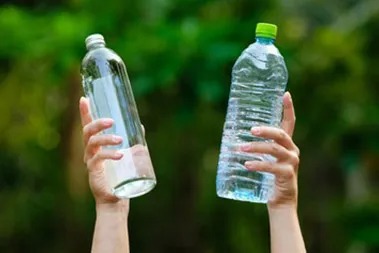
Table of Contents
Health and Safety of Beverage Packaging
When choosing a drink, consumers often consider the health implications of its packaging. Here’s how glass, plastic, and aluminum compare on key safety factors.
Chemical Safety
Glass bottles are chemically inert and don’t interact with beverages. This prevents chemical leaching, making glass ideal for preserving pure flavors in premium or organic products. Most plastic bottles today use BPA-free PET materials, addressing past concerns. However, reusing plastic bottles or exposing them to heat may still release microplastics or endocrine disruptors. Aluminum cans rely on interior linings to prevent metal-drink reactions. While many now use BPA-free linings, the long-term health impacts of alternative coatings remain under study.
Microplastic Contamination
Recent research reveals surprising patterns in microplastic contamination. A French food safety study found drinks in glass bottles (like cola, lemonade, and beer) contained up to 100 microplastic particles per liter – significantly higher than plastic bottles or cans. This contamination stems primarily from plastic caps and painted capsules, not the glass itself.
Plastic bottles showed lower contamination levels (2-20 particles/L in sodas; 1.6 particles/L average in water). Even bottled water in glass containers averaged 4.5 particles/L versus 1.6 particles/L in plastic.
Health Implications
While microplastics are increasingly detected in beverages, their health risks lack comprehensive understanding. Preliminary studies suggest potential impacts on gut health, liver function, and DNA, but conclusive evidence remains limited. Proper cap cleaning reduces – but doesn’t eliminate – microplastic transfer during bottling.
Glass bottles may shatter if exposed to sudden temperature changes or physical impact, posing injury risks. Plastic bottles carry higher chemical leaching risks when reused or stored in hot environments. Aluminum’s main uncertainty lies in the long-term safety of its lining materials.
Summary Table
| Packaging Type | Chemical Leaching | Microplastics (per L) | Other Risks |
|---|---|---|---|
| Glass Bottles | Minimal/Inert | Up to 100 | Fragility, cap microplastics |
| Plastic Bottles | If reused/heated | 1.6–20 | Heat reuse = higher risk |
| Aluminum Cans | Liner-dependent | Similar to plastic | Lining chemical uncertainty |
Key Insights
Glass offers superior chemical stability but surprisingly higher microplastic contamination from caps. Plastic demonstrates lower microplastic levels when used as intended (single-use, cool storage). Both packaging types require further research on long-term microplastic exposure effects. Aluminum’s safety profile hinges on evolving lining technologies.
Taste and Quality Preservation
For both consumers and brands, taste and quality are critical factors in beverage packaging. How materials preserve flavor directly impacts drinking experience.
How Packaging Affects Beverage Taste
Glass bottles are chemically inert, preventing flavor transfer and preserving the drink’s original taste from production to consumption. Plastic (PET) bottles, while lightweight, allow gradual oxygen ingress. This can cause carbonated drinks to go flat faster and may impart subtle off-flavors over time—especially in products with longer shelf lives.
Consumer Preferences
Blind taste tests consistently show consumers prefer beverages in glass. They describe drinks from glass as tasting fresher and cleaner, particularly for flavor-sensitive products like wine, craft beer, or premium sodas. Surveys indicate roughly 60% of consumers associate glass with superior taste.
Carbonation and Shelf Life
Glass excels at carbonation retention due to its rigid structure and tight seals. Plastic bottles gradually lose carbon dioxide, leading to faster flavor degradation in sparkling drinks. This difference becomes more noticeable as storage time increases.
Industry Trends and PerceptionHigh-end spirits and quality-focused beverages overwhelmingly use glass. Beyond aesthetics, glass prevents flavor interactions—crucial for acidic or alcoholic drinks. Plastic remains common for budget-friendly options or convenience-focused contexts where peak flavor matters less. Consumers frequently perceive glass packaging as signaling higher quality, especially for craft beverages.
Glass bottles also maintain cooler temperatures longer, enhancing refreshment. Recycling plays a role too: over 70% of recycled glass becomes new bottles, helping maintain consistent taste and safety across production cycles.
Key Observations
Beverages in glass consistently score highest in taste studies.
Plastic’s taste impact grows more pronounced with storage time.
Glass remains preferred when flavor integrity, freshness, and carbonation are priorities.
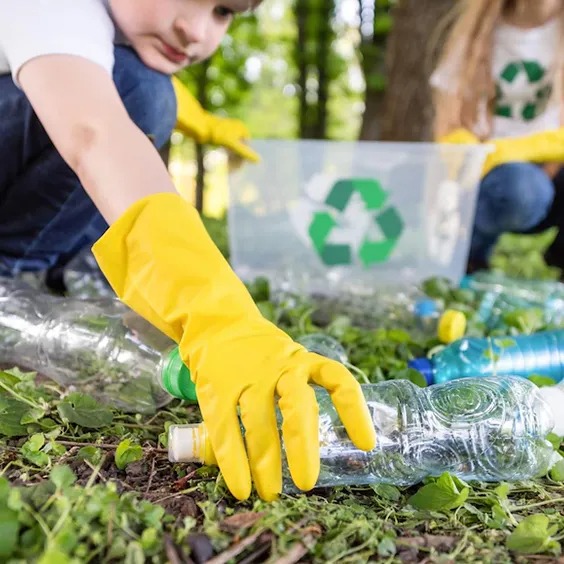
Environmental Impact of Beverage Packaging: Plastic vs. Glass
Comparing the environmental footprint of plastic (PET) and glass bottles involves examining greenhouse gases, resource use, waste generation, recyclability, and transportation efficiency.
PET bottles generally have a lower carbon footprint than glass. Studies indicate glass bottle production contributes up to 95% more to global warming than aluminum cans and significantly more than PET. This stems from glass manufacturing’s high energy demands and heavyweight.
Glass production requires mining silica sand and melting it at extreme temperatures using fossil fuels, consuming substantial energy. A 1-liter glass bottle weighs ~800g compared to PET’s ~40g, making glass far more material-intensive. PET production uses less water, energy, and raw materials overall.
Glass manufacturing releases higher CO₂ emissions and particulate pollution. Mining raw materials also carries health risks like silicosis from dust exposure. While PET generates less solid waste, its lightweight nature doesn’t offset plastic pollution concerns.
Glass is infinitely recyclable without quality loss, but the process remains energy-intensive. Recycling rates depend heavily on local infrastructure. PET is widely recycled but downgrades in quality over time (“downcycling”), and most still ends up in landfills or as persistent microplastics.
Glass’s weight drastically increases shipping emissions. Transporting a 800g glass bottle requires significantly more fuel than a 40g PET bottle, compounding its environmental disadvantage through distribution.
PET dominates ~70% of the beverage market due to its lightweight, clarity, and recyclability. Large-scale adoption of PET over glass could substantially reduce annual emissions, water use, and waste in markets like the U.S. soda industry.
Summary Table
| Factor | PET Plastic Bottles | Glass Bottles |
|---|---|---|
| Weight (1L bottle) | ~40g | Up to 800g |
| Emissions | Lower | Higher |
| Water Usage | Lower | Higher |
| Recyclability | Yes, degrades | Infinite, energy-heavy |
| Transport Emissions | Lower | Higher |
| Waste Generation | Lower | Higher |
While glass offers infinite recyclability, PET typically demonstrates a lower overall environmental impact across its lifecycle due to lightweight efficiency, reduced emissions, and lower resource consumption—particularly relevant for large-scale beverage distribution.
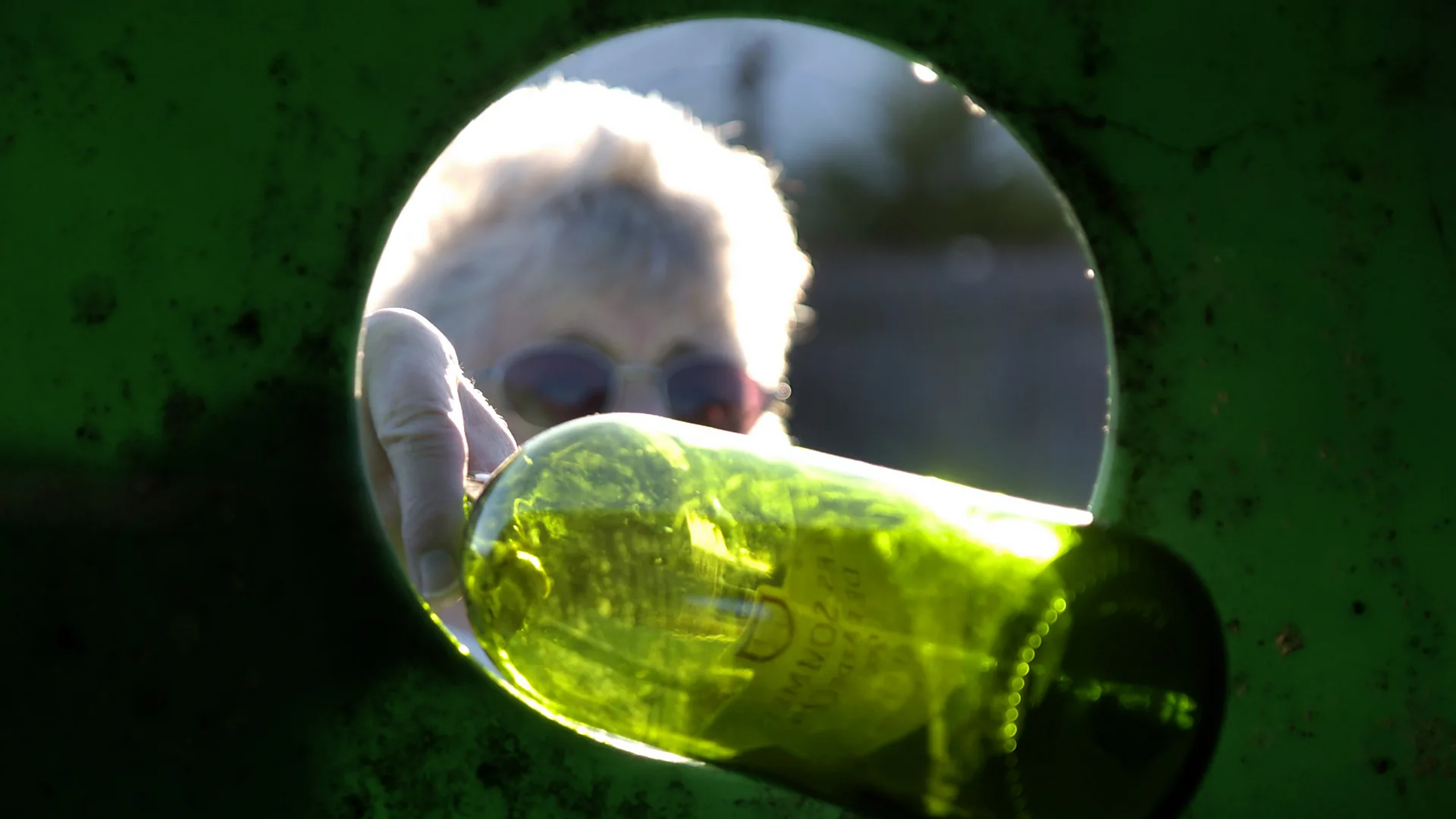
Durability and Convenience: Plastic vs. Glass Bottles
Practicality often drives beverage packaging choices. Plastic and glass offer different benefits for daily use and transport.
Plastic Bottles: Practicality First
Plastic bottles excel in everyday situations. Their lightweight, shatterproof design withstands drops, tight packing, or being tossed into bags. This makes them ideal for active lifestyles—think gym use, hiking, or kids’ lunches. The weight difference is significant: a 2 fl. oz plastic bottle weighs far less than its glass counterpart (about 0.177 lbs for glass). This reduces shipping costs and simplifies bulk handling for businesses. Plastic’s durability minimizes product loss during transit, and features like grippy sides or squeezable designs enhance usability.
Glass Bottles: Premium but Fragile
Glass maintains beverage purity and conveys quality, but its weight and fragility create practical challenges. The material requires careful handling and extra protective packaging during shipping to prevent cracks or breakage. When glass shatters, it risks product loss and safety hazards. Its heaviness makes it less portable for travel or outdoor activities, positioning glass better for stationary settings like home consumption or premium products where taste and branding justify the trade-offs.
Key Differences
Plastic leads in convenience: lightweight, durable, and cost-efficient for shipping. Its main trade-off is potential chemical concerns if reused improperly. Glass guarantees taste integrity but demands careful handling and incurs higher logistics costs. For most on-the-go needs, plastic’s practicality wins. Glass remains preferred where sensory experience outweighs convenience.
Cost and Branding in Beverage Packaging: Plastic vs Glass Bottles
For beverage producers, packaging costs and brand positioning significantly influence material choices between plastic and glass.
Production Costs
Plastic bottles—especially PET—typically cost less to produce than glass. Melting plastic requires lower temperatures (about 170°C) compared to glass (1400–1600°C), reducing energy consumption. Though raw PET material costs slightly more per bottle (30.15 cents for 12-oz vs glass’s 25.18 cents), plastic’s faster production speeds and lower utility bills make it cheaper at scale. Filled PET bottles also show cost efficiency (36.4 cents vs glass at 31 cents) due to streamlined manufacturing.
Transportation Savings
Plastic’s lightweight nature cuts shipping costs substantially. Its durability minimizes breakage during transit, reducing product loss and protective packaging needs. Glass bottles add logistical expenses through their weight (requiring more fuel) and fragility (needing extra cushioning).
Branding and Market Positioning
Glass bottles convey premium quality through their clarity, weight, and tactile feel—making them popular for luxury spirits, craft beverages, and products prioritizing shelf presence. Plastic bottles dominate value-focused segments (like bottled water and soft drinks) where cost-effectiveness, lightweight convenience, and design flexibility matter. PET allows innovative shapes, ergonomic grips, and vibrant labeling suited for mass-market appeal.
Industry Examples
Economy beer brands often use glass to leverage bulk pricing while meeting consumer expectations. Most non-alcoholic beverages choose plastic for its price advantages and distribution scalability. As innovations like biodegradable plastics advance, PET’s cost and branding flexibility continue growing—strengthening its role for brands balancing affordability with market reach.
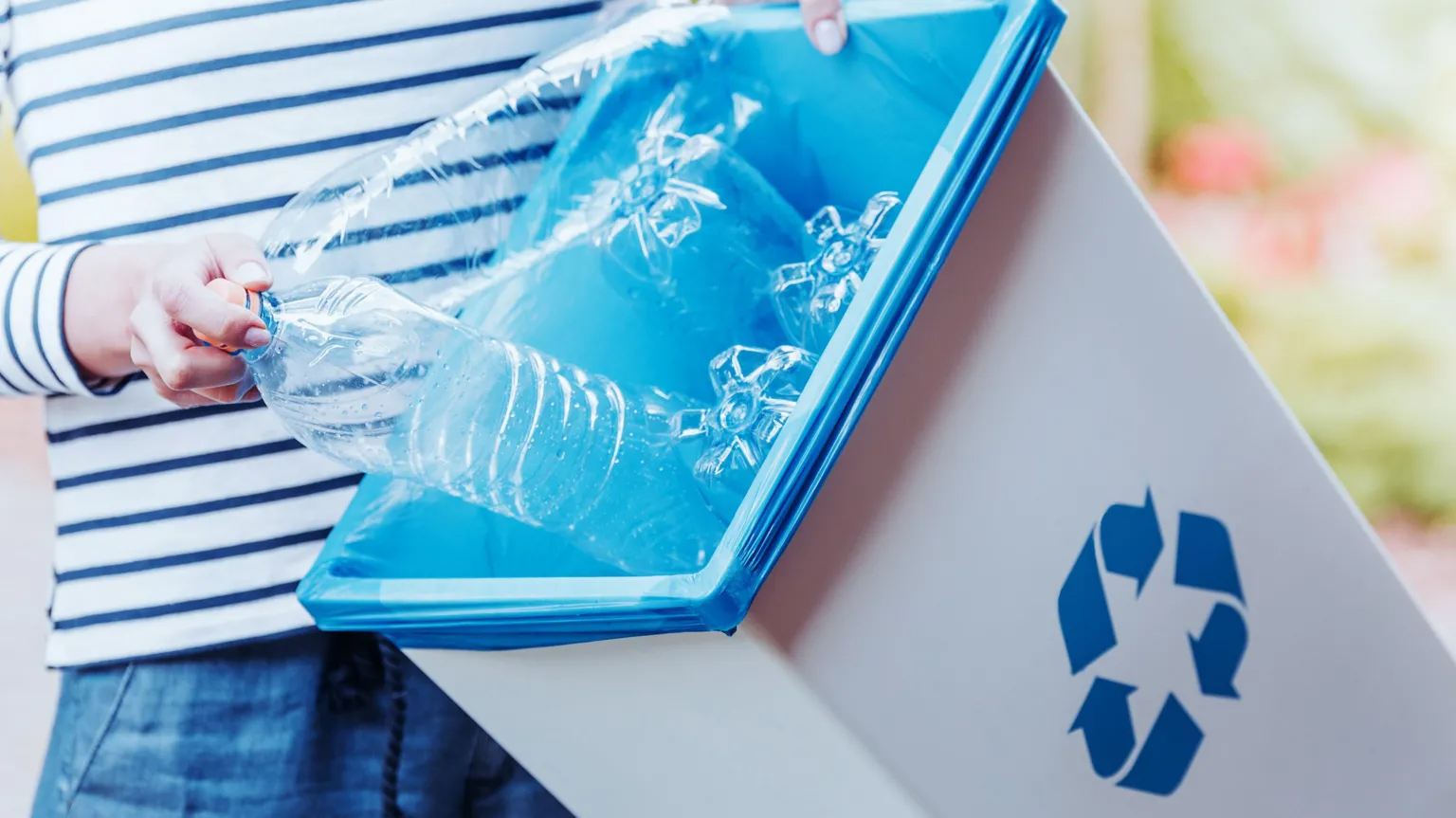
Recyclability of Plastic and Glass Bottles: Which Is More Sustainable?
Recycling effectiveness varies significantly between plastic and glass bottles, impacting their true sustainability.
Plastic Bottle Recycling Challenges
PET plastic bottles are technically recyclable, but real-world recycling rates remain low—globally, just 9–15% actually get recycled. In the U.S., PET recycling peaked at 37.3% in 1995 but dropped to 23.5% by 2006. Europe reported 24% average recycled content in plastic bottles in 2022, though actual recycling rates are often lower. Most recycled plastic isn’t reused for new bottles; about 80% gets “downcycled” into lower-value items like clothing fibers or construction materials. Only around 20% re-enters bottle production, limiting plastic’s circular potential.
Glass Recycling Advantages
Glass bottles support stronger circular systems. They can be washed and reused multiple times without quality loss. When recycled, crushed glass replaces up to 95% of raw materials in new bottles while maintaining clarity. Regional infrastructure heavily influences results: Deposit systems in Germany and Belgium achieve high recovery rates, as do U.S. states like Oregon and California with bottle deposit laws. The U.S. recycled 3.1 million tons of container glass (31.3% of glass waste) in 2018, with a 27.8% average bottle recycling rate in 2006.
Glass recycling faces hurdles where collection systems are weak. Transportation and processing costs run higher due to glass’s weight and fragility. Plastic struggles with inconsistent collection and the fundamental limitation of downcycling—each recycling cycle degrades material quality, making true bottle-to-bottle loops rare.
Glass demonstrates superior closed-loop potential when infrastructure exists, conserving resources through repeated reuse. Plastic recycling rates fall short of technical potential, with most material exiting the beverage packaging cycle after one use. Both materials depend heavily on local systems to deliver environmental benefits.
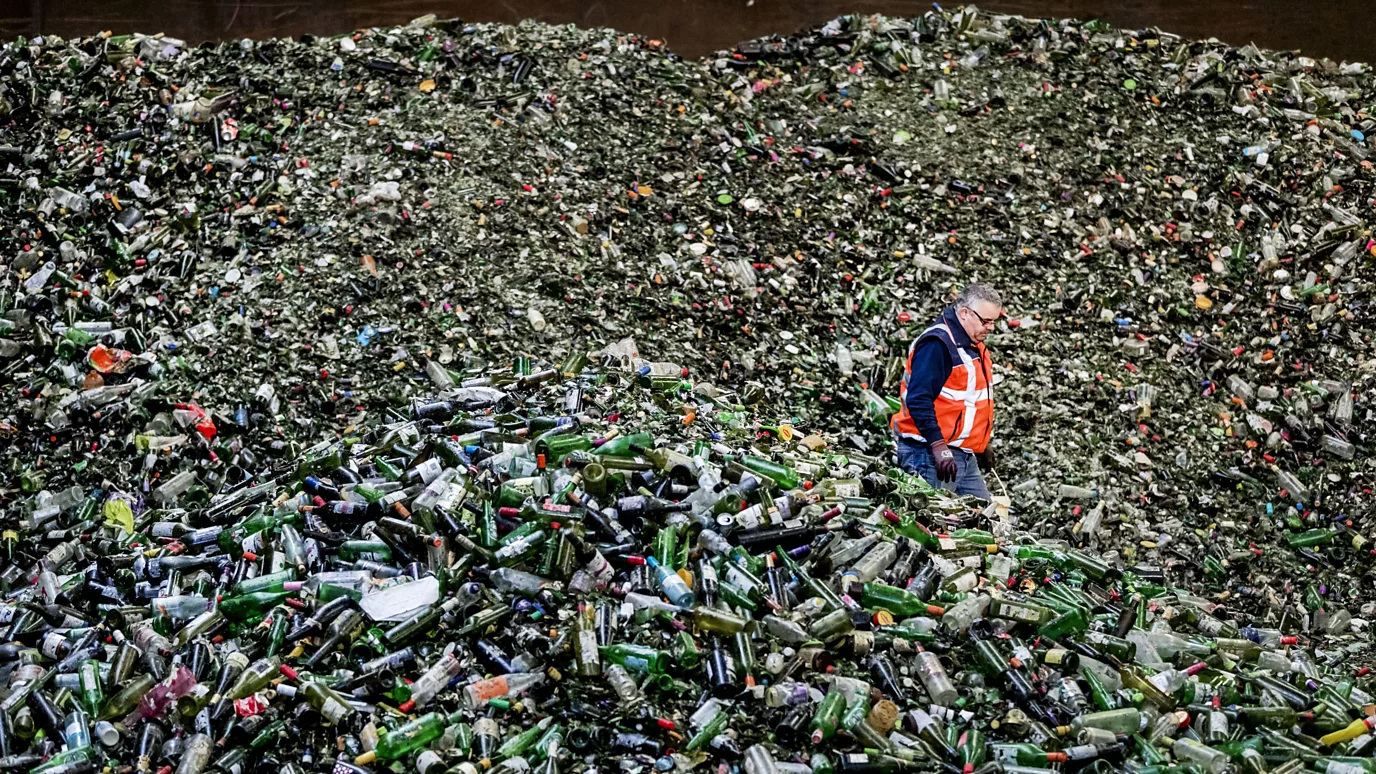
How to Choose the Right Packaging for Your Beverage Business
Selecting between glass and plastic packaging depends on balancing product needs, budget, and logistics. Here’s what beverage brands should consider:
Match packaging to your beverage’s characteristics. Glass excels for spirits or products requiring long-term storage, preserving taste without chemical interactions. Plastic suits children’s beverages—its shatterproof design and squeezability align with kid-friendly usage. Prioritize how packaging affects product quality, convenience, and consumer appeal. An attractive but impractical package risks poor shelf performance.
While meeting consumer needs, remember profitability. Glass carries higher production costs due to energy-intensive manufacturing and pricier raw materials. Plastic offers cost efficiency through cheaper production and lighter materials. Businesses must evaluate whether glass’s premium aesthetic justifies the expense—or if plastic provides a viable alternative for tighter budgets.
Glass significantly increases shipping costs. Its weight demands more fuel, and fragility requires protective packaging to prevent breakage. Plastic’s lightweight durability reduces transit expenses and minimizes product loss. These differences directly impact your bottom line: brands should assess whether their budget accommodates glass’s logistical demands.
There’s no universal solution. Spirits and premium beverages often warrant glass’s quality perception and preservation. Plastic dominates markets prioritizing cost, portability, and child safety. Successful brands align packaging with their product’s identity, target audience, and operational capabilities.
Conclusion
When weighing plastic against glass for beverage packaging, both materials serve distinct purposes. Plastic excels in lightweight convenience and cost efficiency for high-volume, on-the-go consumption. Glass, however, emerges as the superior choice where purity, taste preservation, and authentic sustainability matter most. Its inert nature safeguards flavor integrity, eliminates chemical leaching concerns, and enables true circularity through infinite recyclability. While challenges around weight and fragility exist, glass remains unmatched for premium beverages, health-conscious brands, and eco-driven consumers seeking enduring quality.
At TP Glass Bottle Manufacturer, we craft glass bottles that elevate these advantages – combining artisanal craftsmanship with cutting-edge eco-design to deliver packaging that honors your product and our planet. Because when excellence flows from bottle to beverage, everyone tastes the difference.

